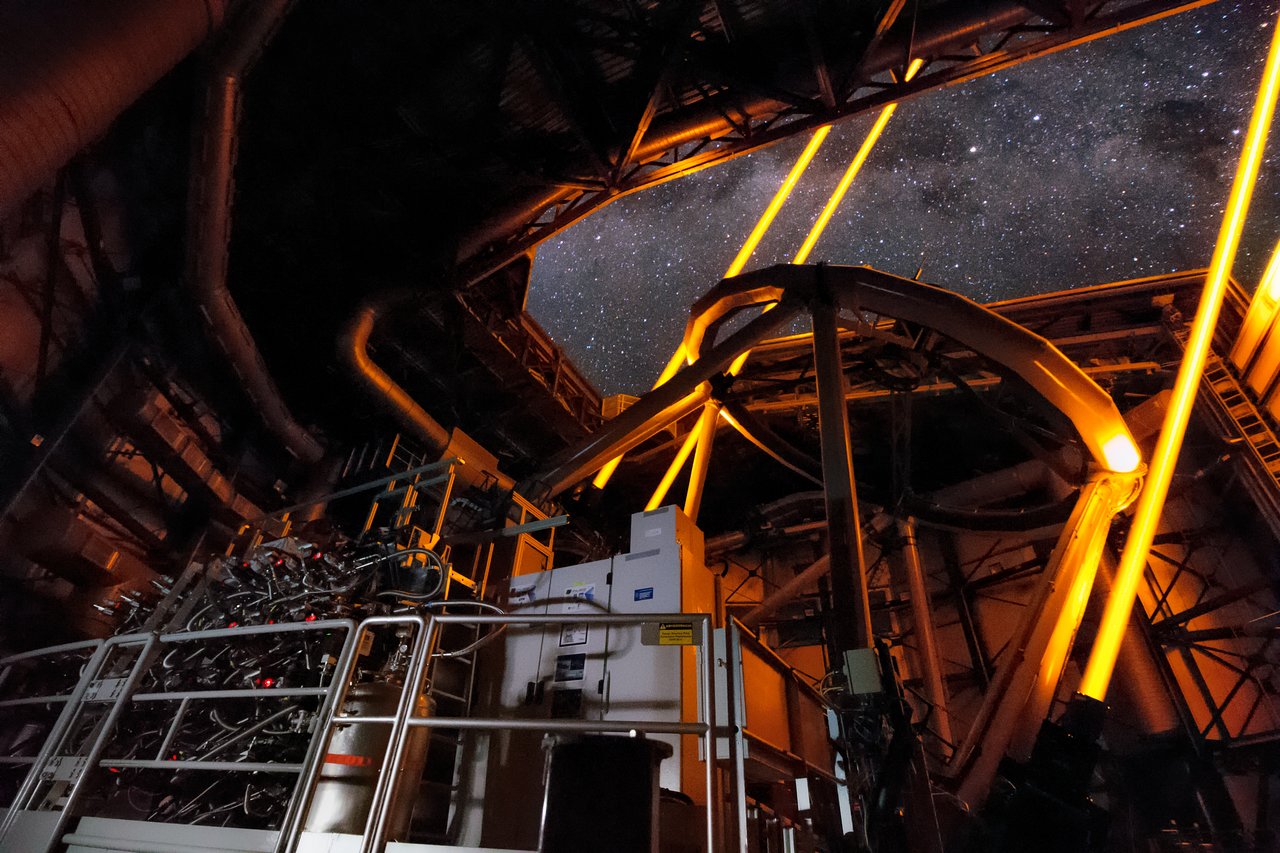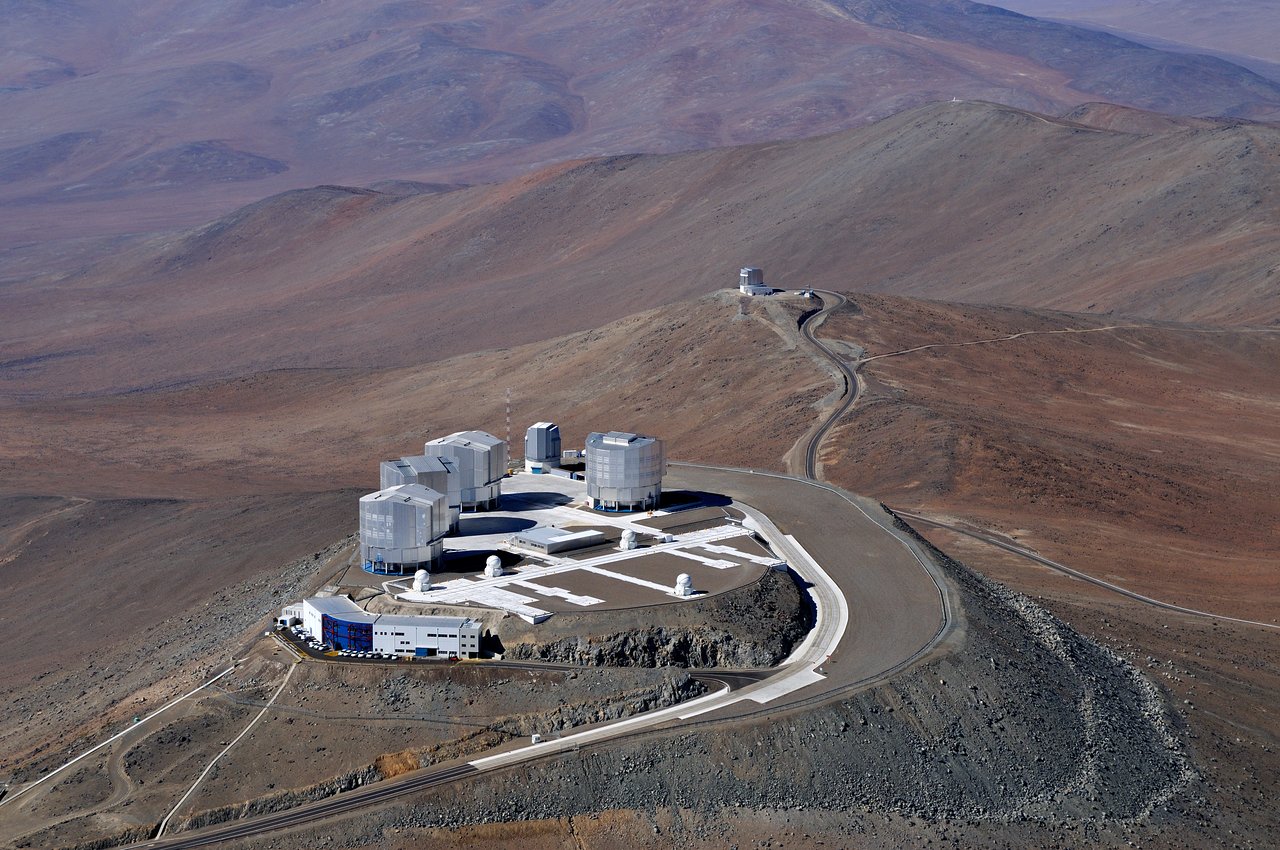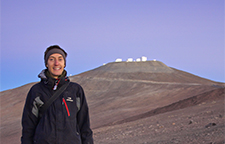
Working atop Paranal
ESO's Adaptive Optics Scientist at Paranal talks about life in the desert
- What it’s like to work at ESO’s Paranal Observatory in Chile
- How adaptive optics allows ESO astronomers to observe the Universe in amazing detail
- What the future of adaptive optics looks like
Q: As Adaptive Optics Scientist at Paranal, you’re responsible for a crucial feature of some of the world’s most advanced telescopes. How does your work help keep ESO’s observations at the forefront of ground-based astronomy?
A: Adaptive optics (AO) has indeed become a crucial component of Paranal’s instrumentation, and it will continue to have an even larger impact in the future — especially when ESO’s Extremely Large Telescope (ELT) begins operations. My work ensures that the astronomers and operators have the knowledge to work with these complex systems, and that these systems are combined with compatible atmospheric conditions so they give us the best possible performance.
Q: How would you explain adaptive optics to a non-expert? Are there any analogous processes in day-to-day life?
A: Have you ever tried to look at a coin sitting on the bottom of the swimming pool? It’s not as easy as it sounds — if the water is turbulent with waves or eddies on the surface, then the image of the coin will be distorted. If you snapped a long-exposure photo of the coin with a camera, it would be blurry. A similar thing happens in astronomy. The atmosphere actually behaves like water, or any fluid medium, and astronomers are trying to observe distant objects through this medium to see as many fine details as possible. But if the atmosphere is turbulent, then the image that a ground-based telescope creates of a star or a galaxy will be blurry.
The first solution to this problem is to select astronomical sites with the least turbulence, such as in dry, high-altitude regions. The second, more high-tech solution is to correct the remaining turbulence by using a deformable mirror, which essentially changes its shape to adjust the light that reaches the telescope and compensates for the image distortion.
Q: So how did you become Paranal’s Adaptive Optics Scientist?
A: I previously worked at ESO as a postdoctoral fellow, with duties on an extreme AO instrument called SPHERE. SPHERE is a system built to detect exoplanets by direct imaging. Because planets detectable from Earth orbit close to bright stars, we needed to use adaptive optics to get very sharp images to try to detect exoplanets despite the glare of their parent stars. I gained a lot of experience by operating this complex system. In the past, I also used the NACO instrument for my scientific research, which is also equipped with AO, so I was already acquainted with the two larger AO systems in operation at Paranal at that time. This really helped me to become Paranal’s Adaptive Optics Scientist.
Q: Paranal must be one of the most remarkable places in the world to work — what’s a working day like in the midst of the Atacama Desert?
A: There is no typical working day, which is part of the charm of Paranal. Your activities can vary widely depending on whether you work during the day (for instance, as a day astronomer or shift coordinator), or during the night. In the day, you check the data obtained the previous night, make sure the corresponding calibrations are made, and prepare the instruments for the coming night. You also interact a lot with engineers, who use the day to perform necessary maintenance on the telescopes. When I work at night, on the other hand, I usually wake up in the afternoon and enjoy a swim in the pool or a run in the desert before getting ready for a night of observations. If we have visiting astronomers, we bring them into the control room and discuss their observation strategy. Otherwise, we interact mostly with the telescope and instrument operators — they are in charge of the telescope side of the observations, and are also experts in using the instruments. So there’s a lot of variety!
Q: What’s it like to live in such an extreme region?
A: Paranal is a very special place, and the contrast between the desert and the inside makes the experience of living there unforgettable. Outside, the desert is majestic, overwhelmingly silent, with endless hills on the horizon, an intense blue sky in the day and a stunning star-studded sky at night, inviting you to think about how tiny humans are in the Universe. This is in huge contrast with the inside of the observatory, where engineers, operators, astronomers are actively working in this hive to deliver the best-quality data from the telescopes and their instruments. The desert can also be dangerous, with very dry air and high solar radiation — again in contrast with the well-organised logistics inside the observatory, making sure everyone working there feels comfortable.
Q: You’re originally from France — is there anything you miss about home? Conversely, when you’re in France do you miss anything about Chile?
A: Like most French people living in Chile, I miss the cheese and any French cheese specialities like raclette, fondue, and tartiflette! When I’m in France I miss “palta”, the Chilean word for avocado, which is a very common ingredient used in every kind of meal in Chile.
Q: What’s it like to work for ESO?
A: Through working at ESO, I’ve greatly improved my technical expertise in the wide range of instruments operating at Paranal. This has directly impacted my scientific research; it means I can write successful proposals for my own observations because I really understand the ideal conditions for each instrument I want to use.
Working at Paranal, or more generally in an observatory, is a good opportunity to understand the complete data cycle, and I really enjoy following studies from the original idea for an observation right up until the publication of the results. At ESO I’m also lucky enough to interact with a wide range of people, from engineers to operators to visitors — so many more different kinds of professionals than if I had a job in a research institute. This means I can get to know many fascinating fields of astronomy that aren’t my own area of expertise.
Q: Do you still have time for your own research? If so, what are you working on?
A: Keeping our own research up-to-date is actually part of working at ESO, so I spend about a third of my time on my own scientific research. I try to understand how planetary systems form and evolve, by looking at a particular component of most planetary systems: Kuiper belt analogues, which are also known as debris discs. I recently tried to understand why so few debris discs were detected through their scattered light — I led a survey of 55 stars believed to host such a disc, but without detection of scattered light so far. We ended up discovering several new discs, plus a low-mass companion, most likely a brown dwarf.
Q: Tell us a bit about the algorithms you have developed to process high-contrast data.
A: When we try to detect material around a star — for example, a disc or a planet — this material is almost always extremely faint compared to the star, which is typically a hundred thousand times brighter. For instance, one of the first exoplanets, Beta Pictoris b, was detected in 2008 but its signal was already present in images as old as 2003. The faint signal had been missed in the first place because data processing techniques at the time weren’t efficient enough to reveal it among the glare of its host star. So in order to see what’s around the star, we need to somehow remove the star’s bright halo. I develop algorithms to do this. It’s an exciting new area with a lot of room for improvement, and it allows me to express my scientific creativity by testing new ideas. It’s an area where my technical knowledge of the instruments, cameras, observation strategies, and atmospheric conditions is a real asset, allowing me to fine-tune data processing techniques.
Q: The upcoming ELT will be a revolutionary telescope and will come equipped with adaptive optics. How will experience from the VLT improve adaptive optics in the future?
A: Today, the fourth Unit Telescope of the VLT (UT4) is already a fully adaptive telescope, with a large secondary adaptive mirror. The technical experience gained by operating such a large adaptive mirror will be extremely valuable for the ELT, which will face additional challenges, especially because its primary mirror will be made up of hundreds of segments working together as a whole. Optimising the schedule and the time allocation of the science programmes on the ELT will also benefit from our experience with the AO instruments on the VLT. AO systems require very specific atmospheric conditions to work, so we’ll need time turbulence predictions and real-time schedule optimisation tools in order to avoid wasting precious ELT observation time.
Numbers in this article
|
4 |
Number of laser guide stars used in the adaptive optics system on ESO’s VLT |
|
55 |
Number of stars Julien Milli surveyed as part of one of his research programs on debris discs |
|
2024 |
Targeted first light for the adaptive optics-equipped ELT |
Biography Julien Milli
Julien Milli studied Engineering and Astrophysics in Paris before completing his PhD jointly at the Institute of Planetology and Astrophysics of Grenoble, France, and ESO Santiago, studying circumstellar discs at high angular resolution. He then became an ESO fellow in Santiago, with duties on the VLT/UT3. Since 2016, he has been the VLT Adaptive Optics system scientist, and remains part of the UT3 team as a support astronomer for operations. With an observational background in high contrast and high resolution imaging, his scientific interests includes the formation and evolution of circumstellar debris discs, especially the scattering properties of the dust and the interaction with planets in those systems.





